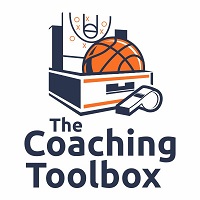
These defensive concepts from 3 highly successful college basketball coaches were posted on Bob Starkey’s Basketball Coaching Blog, hoopthoughts.blogspot.com.
Even if you don’t play a pack style defense, I hope this might get you thinking about terminology and philosophy that can be applied to improving your system.
Jim Boone, Head Coach Delta State Men
Here’s a few concepts and teaching points from Jim Boone in regard to the way he plays Pack Line defense.
Keys in Teaching:
1. Position players in such a way to already be in help.
2. Build a wall to stop the ball.
3. Five players working together.
4. Communication
Coach Boone: “We are zoning the ball.”
Five Things to Work on Daily:
1. Conversion defense
2. Low post defense
3. Pressure on the ball
4. Help/recover
5. Blockout
Coach Boone: “You can’t play transition defense while you’re in transition.”
Coach Boone: “Low post defense dictates how you set your entire defense up.”
Five Defensive Goals:
1. Pressure the ball
2. Contest all shots
3. Keep the ball out of the lane
4. No second shots
5. Do not foul
Coach Boone: “We want to determine what shots you get.”
Conversion Defense:
1. No fast break lay-ups
2. Out number the offense
3. Build from the lane out
Chris Mack, Head Coach Xavier Men
Pack Line defense helps give you a “system” to play defense.
1) Gives players answers and accountability
Certain things players can/can’t do do
They are given specific rules ex. “You can’t play behind the post” vs “Play hard”
2) Simplifies Scouting
Their coaches watch a ton of film but do not give it all to the
players. Instead they play certain actions in very specific ways and practice these
every day.
Example: Practice defending staggered screens so when they play a team they already know how they will defend this and get better at it through out the year.
3) Creates a culture your players can believe in.
Varsity players “pass” down the defense by teaching your younger players without a lot of involvement from coaches.
GOLDEN RULE: When your man does not have the ball YOU MUST HAVE 2 FEET IN
THE PACK LINE.
Exceptions: If your man is cutting you must chase the cutter.
1) On the Ball: Have extreme ball pressure — do not get beat to the outside NEVER GIVE UP BASELINE
Keep your butt to the basket
Don’t get beat baseline
If your man goes towards the middle do not get beat through the elbow, they can’t attack you on a straight line.
2) You must have two feet inside the pack line when your man does not have the ball and you are trying to form triangles
Defining Your Team
- How do you close out?
- Close out with two high hands to discourage rhythm shots
- Play in then out
KEY: Your positioning is your help
Discourage shots, play the drive, call shot when the shot goes up.
Mike Neighbors, Head Coach Washington Women
When your man has the ball on the perimeter:
1. You were there on the catch.
2. You were the to take away the quick shot or quick pass
3. You were close enough to pressure without getting beat off the bounce.
a. Don’t get beat to the outside
b. Don’t get beat in a straight line
When your player does not have the ball on the perimeter:
1. You are about half way between the ball and your player
2. You are a step off the line that would connect the ball to your man
3. You are actively able to see both ball and man
Ball being passed to their player:
1. Move on the air time of the pass
2. Start with sprint and end with chops
3. High hands to active hands
Ball being passed but NOT their player:
1. Move on air time of the pass
2. Sprint to gap.
Teaching Points
1. Players must begin in proper position
2. Players must be vocal in communication of their responsibilities
“Ball” = this means I have the ball
“Gap” = this call means my player does not have the ball but I am in your dribble gap
“Help” = this call means my player does not have the ball but is on the opposite half of the court than the ball is.






